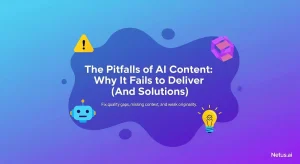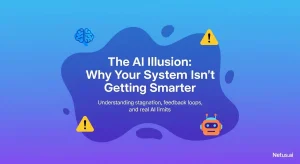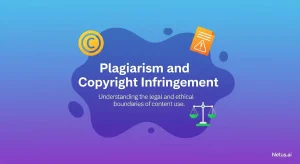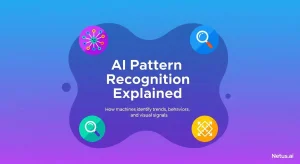Learn Why Anti-Plagiarism Software: A Must-Have Tool for Researchers
Ashley Merit
Content writer and editor for Netus.AI
Table of Contents
Learn Why Anti-Plagiarism Software. In today’s academic world, a research-based curriculum is paramount for university courses, requiring students and researchers to produce high-quality thesis papers. During the writing process, it’s possible for individuals to unintentionally incorporate portions of their reference material into their own work. This raises concerns about plagiarism, both intentional and unintentional, and highlights the importance of using anti-plagiarism software to maintain academic integrity.
Moreover, students pursuing higher studies need to be cautious about plagiarism even if it stems from a lack of effort or misunderstanding. By adopting specific strategies, they can ensure their work remains plagiarism-free and upholds the values of ethical writing.
Key Takeaways
- The importance of maintaining academic integrity through plagiarism-free work
- Utilizing anti-plagiarism software to identify unintentional instances of plagiarism
- Implementing strategies to promote ethical writing and prevent plagiarism
Understanding Plagiarism
Plagiarism encompasses the unauthorized and unlawful usage of another person’s work, presenting it as one’s own without acknowledging the original creator. Often regarded as intellectual theft, it compromises academic integrity and is categorized into various types of plagiarism, such as intentional plagiarism, unintentional plagiarism, and self-plagiarism. Proper citation practices and the use of anti-plagiarism software can help in avoiding plagiarism in academic and research work.
How to Check Plagiarism?
Students and researchers should first explore their own ideas on a topic and structure their content by answering research questions. In-depth research and gathering reference materials are crucial steps in the writing process, ensuring the usage of proper sources.
During the writing process, it’s essential to take note of the references used to substantiate their arguments and give due credit to the original sources. Post-writing, focus on editing your work and checking for plagiarism.
To minimize plagiarism, utilize an anti-plagiarism software that can accurately detect copied content, enabling you to make necessary changes. Prior to running your text through a plagiarism checker, consider using a grammar-checking tool to ensure higher accuracy.
Some popular plagiarism detection tools include:
- Turnitin: Widely used by academic institutions to check student papers.
- iThenticate: A professional tool for researchers and publishers.
- Originality Checker: Algorithms built to detect similarities and potential plagiarism instances.
Implementing anti-plagiarism software is an effective way to produce original content and maintain academic integrity.
Plagiarism Content Highlights
Both students and professional writers could unintentionally incorporate plagiarized content into their work. This can occur when using reference materials and failing to properly quote or cite the original sources. Misconceptions about utilizing published work, such as aiming for higher scores, can harm a student’s career. Regardless of intention, plagiarism negatively impacts a writer’s reputation.
Anti-plagiarism tools play a crucial role in addressing these issues by examining uploaded papers against a database of published work available online. These tools efficiently identify and highlight any portions of copied content within an article, helping writers and researchers avoid copyright violations. Through proper editing and policing of content, the risk of accidental plagiarism can be minimized.
In summary, it is essential for writers and researchers to be aware of the potential for plagiarism in their work and use anti-plagiarism tools to maintain originality and uphold academic integrity. By understanding the importance of proper citation and recognizing copyright violations, the quality of published work can be preserved, and an environment of ethical writing and research can be fostered.
Additional Reference Offerings
Occasionally, students and writers may unintentionally commit plagiarism by failing to properly cite their sources. It’s crucial to adhere to a suitable citation method, including providing the title of the referenced book, author’s name, publication date, and page number. When using an online journal, it’s necessary to include the issue number. For websites, the URL should be part of the citation as well1.
To prevent plagiarism related to improper citation, anti-plagiarism tools can be extremely helpful. They detect duplicated content within uploaded articles, highlighting the plagiarized sections and providing users with a link to the original source2. This enables researchers and writers to make appropriate citations and ensure that their work adheres to intellectual property guidelines.
In addition to using anti-plagiarism tools, individuals should familiarize themselves with proper citation practices such as tutorials and peer-reviewed guidelines related to their field3. By taking these necessary steps, one can avoid copyright infringements, uphold the standards of academic integrity, and contribute to the global knowledge base in a responsible manner.
Percentage Data of Similarity
The method employed by an originality checker is a comparison of the submitted document with existing documents, identifying matches in phrases, sentences, or paragraphs. However, some overlap may happen due to commonly known facts, resulting in potentially false positives.
Generated reports provide detailed information on the levels of similarity, allowing for the analysis of content and the opportunity to use citations or quotation marks to acknowledge matching parts. Employing this data allows writers to accurately address possible plagiarism in their work, ensuring originality, transparency, and credibility.
Proof of Originality
The originality report generated by anti-plagiarism software serves as a valuable tool for writers and organizations. For freelance writers, this report helps ensure that their work is unique and of high quality.
Organizations relying on professional writers, such as e-commerce websites, may be concerned about the originality of their content. It is well known that search engines like Google penalize websites with duplicated content by reducing their SEO rank, which can lead to decreased traffic and ultimately harm their business.
By using an originality report with a low similarity percentage, these organizations can be confident that their content is both unique and of high quality, reducing the risk of search engine penalties. This proof of originality is crucial for maintaining a strong online presence and encouraging continued growth.
Assessment of Paraphrased Content
Paraphrased content arises when writers reword original articles to present a similar message. This becomes an issue when quotations are not used, leading to plagiarism. Students and writers often replace parts of a text with synonymous words to evade citations.
Utilizing paraphrase software can assist in identifying paraphrased sections of an article. Proper quotations and citations are vital when incorporating paraphrased content. Anti-plagiarism tools help detect these sections, thereby guiding writers to use proper quotes and avoid plagiarism.
- Assessment: Evaluating the paraphrased content is essential for maintaining academic integrity.
- Feedback: These tools offer feedback on whether the content is paraphrased and if quotations are necessary.
- Formative feedback: As writers improve and refine their content, they can continually utilize anti-plagiarism tools to ensure proper citation of paraphrased material.
Frequently Asked Questions
Advantages of Anti-Plagiarism Software in Academic Research
- Ensures originality of research work
- Enhances credibility and reliability of academic publications
- Simplifies proper citation practices
- Avoids unintentional plagiarism through lack of knowledge or oversight
Increasing the Integrity of Scholarly Publications
- Verifying the authenticity of submitted research
- Maintaining high standards for published research
- Encouraging authors to give proper credit when citing others’ work
- Protecting intellectual property rights
Assisting Peer Review Process with Anti-Plagiarism Tools
- Streamlining the review process by identifying potential plagiarism early on
- Allowing reviewers to focus on the merits of the research rather than verifying originality
- Facilitating communication between authors and reviewers on citation practices
Addressing Academic Plagiarism Consequences and Prevention
- Upgrading academic reputation and trustworthiness by ensuring original content
- Helping students, researchers, and institutions to avoid legal and ethical repercussions related to plagiarism
- Guiding users on proper referencing and citation techniques to deter intentional plagiarism
Plagiarism Detection in Research Papers
- Employing advanced algorithms and “fingerprinting” techniques to match content with existing documents
- Scanning sentence fragments and structures for similarities
- Accessing extensive databases of academic and online materials
Differentiating Common Knowledge from Plagiarized Content
- Recognizing widely-accepted facts and general information to avoid false positives
- Analyzing the context and relevance of content to distinguish common knowledge
- Continuously improving algorithms to better discern between original and plagiarized content
Footnotes

The shortcomings of content generated by AI | NetusAI
Discover why fast, high-volume AI content often fails to deliver real results. Learn about the crucial missing feedback loop and how implementing performance tracking can transform your AI content strategy.

The illusion of AI: Your system's intelligence gap | NetusAI
Stop wasting marketing spend! Most AI tools don’t learn from results, causing content stagnation and low engagement. Discover why your generative AI isn’t getting smarter and what system actually learns and optimizes content.

Plagiarism and copyright infringement | NetusAI
Learn the distinct differences between plagiarism and copyright infringement. Understand the ethical and legal implications and get practical strategies for avoiding both academic and creative work with NetusAI.

Tips and strategies for mobile content marketing | NetusAI
Optimized for mobile-first indexing, learn 5 essential strategies to capture attention, enhance engagement and drive leads and sales with your mobile content marketing.

Web content editing guidelines for the AI era | NetusAI
Review web content editing guidelines for the AI era. Learn how to edit AI-generated content, ensure authenticity and optimize for SEO and readability.

Explaining AI pattern recognition | NetusAI
AI pattern recognition enables machines to identify trends for diverse applications, from detecting plagiarism to fraud. Discover its processes, models and real-world benefits.
